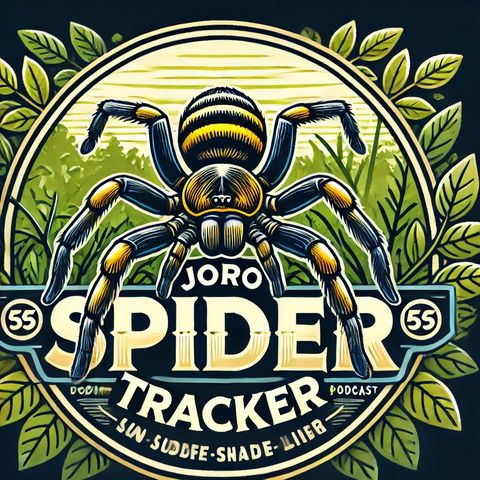Joro Spider Invasion: Fears and Fascination as the Exotic Arachnid Spreads Across the U.S. East Coast

Sign up for free
Listen to this episode and many more. Enjoy the best podcasts on Spreaker!
Download and listen anywhere
Download your favorite episodes and enjoy them, wherever you are! Sign up or log in now to access offline listening.
Description
The Joro spider, a species native to East Asia, has been gradually making its presence felt in the United States, particularly along the East Coast. First spotted in Georgia around...
show moreThe Joro spider, part of the orb-weaver genus, is known for its distinctive and sizable yellow and black webs. The spiders themselves are quite large, bright, and hard to miss, with females reaching sizes of about three inches when including their leg span. Despite their daunting appearance, Joro spiders are typically non-aggressive towards humans and are considered harmless. Their venom is not potent enough to seriously harm humans, echoing the characteristics of most orb-weaving spiders.
The spread of the Joro spider has triggered various reactions among residents in areas where these spiders are either already prevalent or expected soon. In New York City, where rumors predict their possible expansion, locals have mixed feelings. Some express concern and unease about encountering these large, vivid spiders in their everyday environment. Others are curious or indifferent, recognizing the spider's potential role in local ecosystems.
Ecologically, the Joro spider could even be beneficial. These spiders are voracious predators of pests, and their presence might help control the populations of insects, including mosquitoes and flies, thereby contributing positively to human habitation areas. Studies suggest that the Joro's resilience and ability to survive colder climates could see them becoming a permanent fixture in their new North American habitats. This adaptability is further evidenced by their ability to withstand the winter cold, which many initially thought would halt their spread northward.
From an environmental perspective, the introduction of non-native species like the Joro spider can have unforeseen impacts on local ecosystems. These can be positive, as in the potential control of pest populations, or negative, such as competition with native species, particularly other spider species that are ecologically important. The long-term ecological impact of the Joro spider's proliferation is still up for close observation and study.
In response to the arrival and potential spread of the Joro spider and its ilk, cities like New York are focusing on public information campaigns. Educating the public about these spiders, their habits, and the minimal threat they pose can help mitigate unwarranted panic and encourage a more informed and measured response from the community.
Overall, as the Joro spider potentially expands to new regions, including major urban areas like NYC, the reaction among locals and environmental scientists highlights a broader discussion about biodiversity, invasive species, and human cohabitation with nature. It underscores a need for ongoing research, monitoring, and public education to ensure that these new ecological dynamics can be managed responsibly and with minimal disruption.
Information
| Author | QP-4 |
| Website | - |
| Tags |
Copyright 2024 - Spreaker Inc. an iHeartMedia Company
